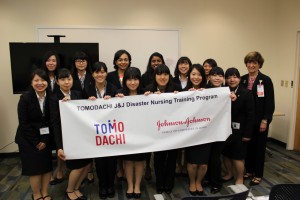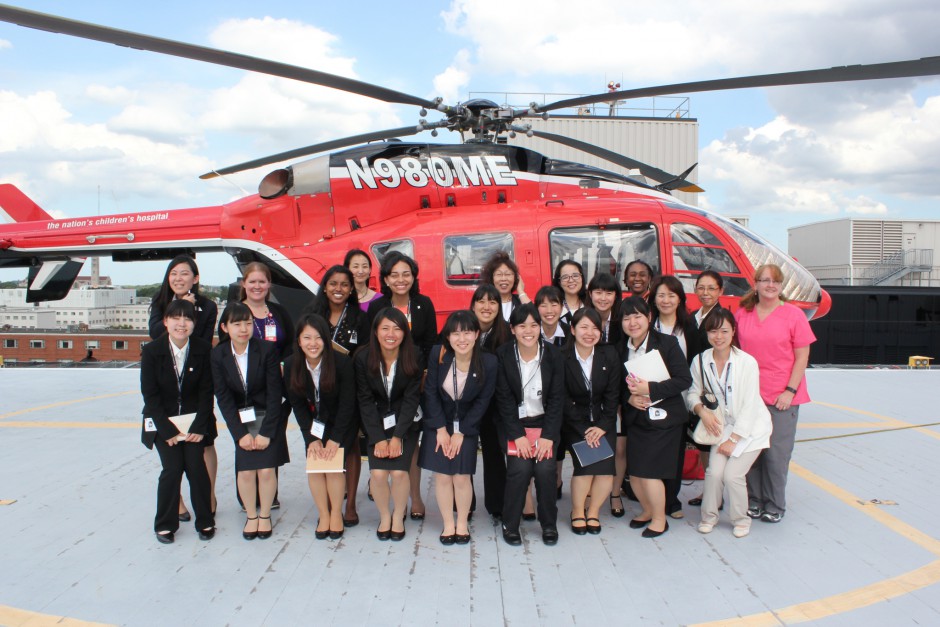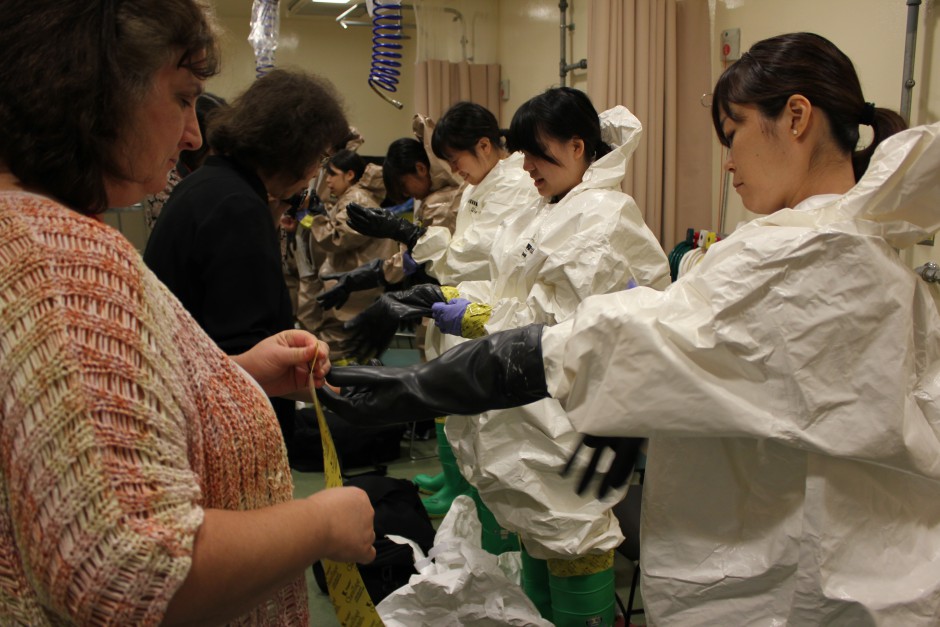Tohoku Nursing Students Travel to the United States to Learn About Disaster Nursing and Participate in Hands-On Training
In its second year, the TOMODACHI J&J Disaster Nursing Training Program took twelve nursing students who study in Iwate, Miyagi, and Fukushima prefectures and three mentors to New York, New Jersey, and Washington, D.C. from August 6-21, 2016. This year, two nursing students from Rutgers University also attended the program. Through the universal language of “nursing,” the Japanese and American students had meaningful communications that transcended the differences in language and culture, including their short-term, mid-term, and long-term goals.
In the United States, each participant talked about their experience from the Great East Japan Earthquake, and also listened to stories from those who experienced and supported the rescue and evacuation of 9.11 and Hurricane Sandy. Through these discussions, the participants learned the significance of sharing experiences from different perspectives and the role and importance of nurses in times of natural and manmade disasters. On August 10, a few days into the program, each student had a five-minute meeting to discuss their daily lives and the program in order to check up on their physical and mental health.
 On August 12 halfway through the program, the participants visited Johnson & Johnson’s headquarters in New Jersey, where they learned about the history of the company and their disaster relief efforts. They also had a chance to trace the history of nursing and medical equipment.
On August 12 halfway through the program, the participants visited Johnson & Johnson’s headquarters in New Jersey, where they learned about the history of the company and their disaster relief efforts. They also had a chance to trace the history of nursing and medical equipment.
Several times, the students were told that they were speaking too quietly and it was an area that needed to be worked on. Therefore, although it was not originally part of the program, Ms. Sawa Ito, manager of the Contributions Committee of Johnson & Johnson led an impromptu workshop on “how to deliver to convey.” The twelve students were divided in two groups, and each group practiced for thirty minutes. Despite the short amount of time, the students learned the difference between speaking from only the throat and projecting from the stomach, and there was a remarkable difference in the delivery and volume of their voices.
 In Washington, D.C, apart from gaining knowledge from lectures, the students took part in hands-on activities, such as the disaster management technique of carrying patients on the stairs during emergency situations. Each student took on the role of both the nurse and patient to physically experience and understand the anxiety felt by the patients. Furthermore, the students practiced donning and doffing suits that were actually worn during an Ebola outbreak as an example of measures against patients with infectious diseases, measured radiation, and learned radioactive decontamination techniques. To conclude the program, four students presented English speeches at the Children’s National Health System. After a short preparation and practice period, each of the students used their own words to present a strong and impactful speech to share their disaster experience and the type of nursing career they want to pursue after the program, which received a big round of applause.
In Washington, D.C, apart from gaining knowledge from lectures, the students took part in hands-on activities, such as the disaster management technique of carrying patients on the stairs during emergency situations. Each student took on the role of both the nurse and patient to physically experience and understand the anxiety felt by the patients. Furthermore, the students practiced donning and doffing suits that were actually worn during an Ebola outbreak as an example of measures against patients with infectious diseases, measured radiation, and learned radioactive decontamination techniques. To conclude the program, four students presented English speeches at the Children’s National Health System. After a short preparation and practice period, each of the students used their own words to present a strong and impactful speech to share their disaster experience and the type of nursing career they want to pursue after the program, which received a big round of applause.
During this U.S. Study Tour, the participants took detailed notes every day, and acquired an abundance of knowledge and experience. At the same time, it was a good opportunity for them to reflect on the current situation in Japan, especially the affected areas of Tohoku where the students are from. After returning to Japan, the goal is for the participants to bring back and share their experiences and take action. Through this program, the students took a big first step toward their goals and now they are preparing to take their next step forward.




